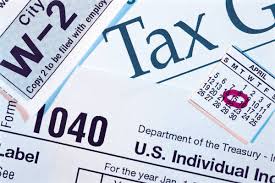
The obvious place to begin is with a recap of last year’s return. After analyzing the figures, begin to determine where you might make changes for next year. If you expect to make more money this year, for instance, start now to put more into a 401(k) account, contribute to a charity to increase your deduction, or buy tax-deductible items, such as business equipment, before the end of December.
Look back on recent events. If you had a major life change, it is likely to alter your tax status (think marriage or the acquisition of a small business.) You may be wise to consider some professional advice before the deadline looms. Many CPAs find themselves with more time on their hands after the Oct. 15 deadline for this year’s quarterly tax business. Seek help in analyzing your situation.
Experts say too many small business owners wait too long to get advice. Don’t try to find a professional tax advisor after the first of the year. They advise that when your income tops $75,000 annually, you’re ready for a tax expert in your particular field.
In an article by Teresa Mears, the following steps are suggested:
If you pay estimated quarterly tax, be sure you are current with payments to avoid possible penalties if your estimates are short. The sooner you send the money, the smaller the penalty will be.
Decide before the fact who is going to claim children as deductions if you and an ex-spouse have shared custody. Or if you share responsibility for the support of another relative, decide in advance who can claim the benefit. Consider the Earned Income Credit to determine what makes the best sense for your situation.
If you did not purchase health insurance this year, as required, you could face a penalty. See if you meet the criteria for any of several tax exemptions and file for a number, which you can obtain from the Health Insurance Marketplace.
At the same time, check the Affordable Care Act to see if you are eligible for a subsidy. If you received too much subsidy this year, you may have to pay it back. On the other hand, if your income did not reach expectations, you may receive a subsidy through your tax return. But the time to make changes with the Health Insurance Marketplace is now.
Spend the extra money in your flexible spending account if it exceeds $500. You can carry that amount into 2015, but you should not leave an excess in your account. Re-examine your company’s plan. Evaluate this year’s expenses and compare with what you expect in the coming year and consider adjusting your withholding if necessary.
Some taxpayers may choose to accelerate or reduce income to create the best tax stance. Prepaying mortgage and real estate taxes and undertaking optional business expenses before this year is out rather than waiting for next year may make sense for you.
If you sold stocks at a profit, you can offset the tax expense by selling other stocks at a loss.
Increasing contributions to your 401(k) or IRA if you haven’t reach the maximum will improve your tax picture. Donating cash or goods to charitable causes is a nice way to raise your deductions. You need to provide a written proof of donations worth more than $250 and an appraisal for anything over $5,000.
When you are thinking taxes, don’t forget to consider state and local tax levies. States sometimes change their tax formulas and you don’t want to be caught unawares.
Don’t be lax with your business. Treat it as such and don’t ignore quarterly tax payments. If you have been accustomed to doing your own taxes via a software application, it may be time to consult with an accountant to avoid surprises.